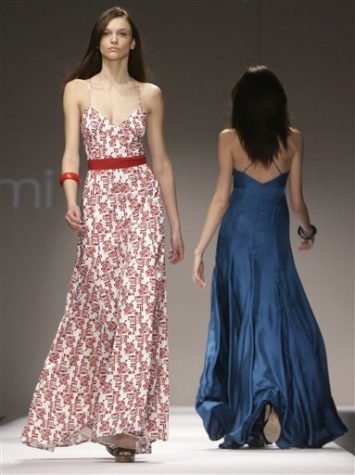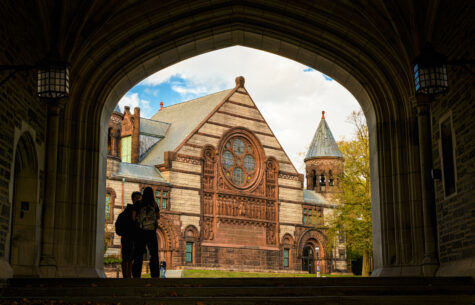Models are Influencing the Teen Body Image
November 3, 2016
With red eyes and blotchy cheeks she stands, looking in the mirror. The words fat, ugly, and not good enough whirl through her head like a cyclone. She sinks to the floor, longing and praying that one day she will look like the model on the cover of the monthly issue of Vogue; finally looking like the world wants her to.
That is the feeling many teenage girls experience at one time or another. According to former supermodel Cameron Russell in her Ted Talk, the images that companies release of models to the world are constructed, with their bodies becoming something not even they have ever seen (tedtalk.com).
Similarly, Amber Starks, female empowerment advocate, grew up as a young African American woman who saw that the ideal of beauty portrayed looked nothing like her. She spent most of her childhood wanting to be like the blonde skinny models plastering every magazine and advertisement (youtube.com).
Aided by these advertising companies and clothing brands, models are portraying an ideal of beauty that has immensely impacted teenage girls.
Russell began modeling at the age of sixteen, and she proved to be a major influence in the industry for ten years when signed with Elite Model Management. She was the face of multiple Vogue covers, and she also had advertising campaigns for companies such as Calvin Klein, Louis Vuitton, and Ralph Lauren. Additionally, she walked in many notable fashion shows such as Chanel, Prada, Marc Jacobs, and Victoria’s Secret.
After a long and successful modeling career, Russell switched her career path to activism for women’s empowerment. In a 2012 Ted Talk, Russell explained that she wanted to expand upon her modeling experience by promoting being content with your own beauty, rather than the artificial beauty portrayed by media.
“For the past few centuries we have defined beauty not just as health and youth and symmetry that we’re biologically programmed to admire, but also as tall, slender figures, and femininity and white skin,” Russell said.

Models walk the runway during the Ford Models Supermodel of the World show in New York, Wednesday, Jan. 17, 2007. The show, in which models from different countries competed for modeling contracts, featured clothes from emerging Australian designers. (AP Photo/Seth Wenig)
According to Russell, the body we are all programmed to love is affecting teenage girls the most. Based on statistics from Russell’s Ted Talk, 53 percent of 13 year old girls don’t like the way their body looks, and that number increases to 78 percent by the time they are 17.
Russell stated that despite a one in one hundred gene pool, model’s bodies are still changed and modified for the benefits of advertisements. One way to achieve this is through photoshop, which is the technological way to erase flaws and alter the body like slimming waists and enlarging muscles. According to Russell, the use of photoshop causes a lot of teenagers to suffer from numerous eating disorders that, in some cases, can be deadly.
According to the National Eating Disorders Association, 20 million women in the United States will suffer from an eating disorder at one time in their lives. These eating disorders can range anywhere from anorexia, bulimia, or binge eating disorder. For females, the mortality rate associated with the illness is twelve times higher than any cause of death.
Starks was in the shoes of one of those girls who struggled with her image. She explained in her Portland Ted Talk that being a young African American woman was one of the most challenging things she ever went through.
“The images I was bombarded with made me think I wasn’t beautiful,” said Starks.
Starks’ goal is to spread the idea that beauty comes in all races, shapes, and sizes. She doesn’t want girls to have to grow up with the message that they aren’t beautiful being placed in their minds. Starks wants girls to grow up strong and confident in a world where they aren’t constantly comparing themselves to the photoshopped models seen in magazines and on advertisements.
“I want to live in a tomorrow where we don’t ask for approval from the standard of beauty to love ourselves,” Starks said.
I understand that models are the excitement of advertisements. They’re the face people think of when a brand is mentioned, and they are people many look up to. However, it is urgent for the bigger picture to be looked at in this situation. The world needs to create an environment where girls aren’t ashamed of their body just because they are different than the models on billboards.
Everyone needs to learn to accept the diversity in individual beauty, rather than judging each other for not giving in to conformity. We need to create that world, so a girl lying on the bathroom floor can look in the mirror and love herself and everything that makes her unique. It is up to us to make not only her life but also girls’ lives all around the world for a much better story to tell.


